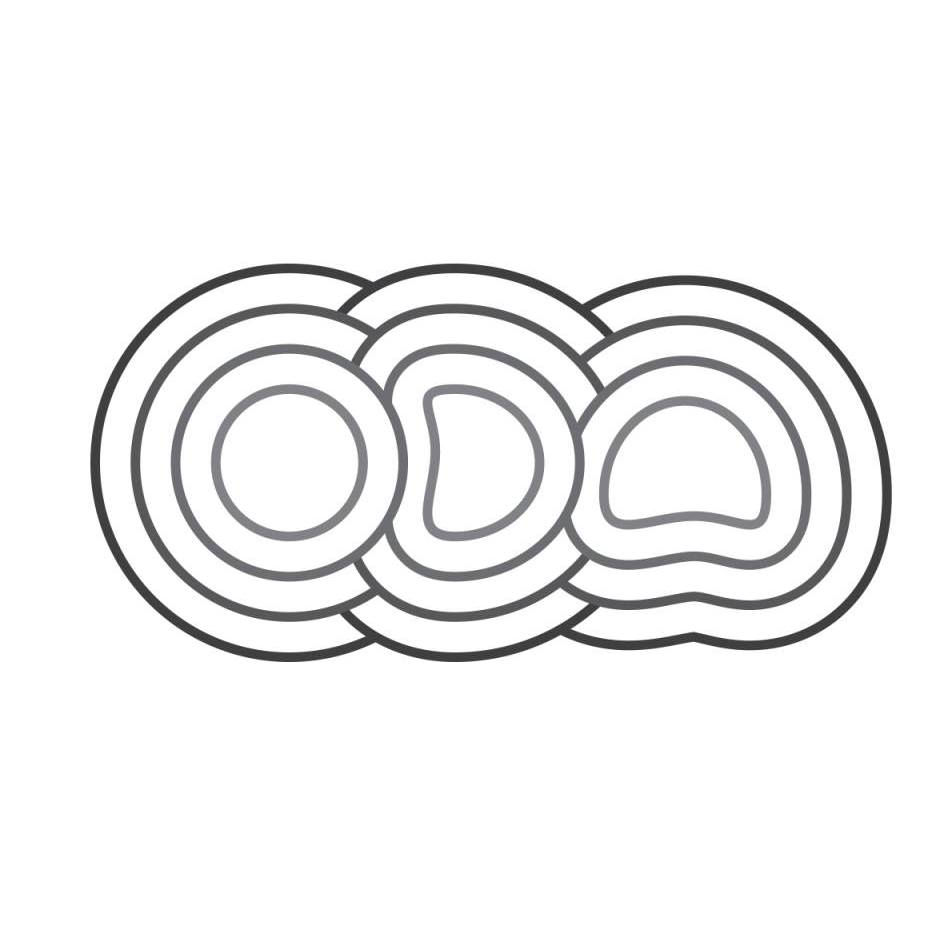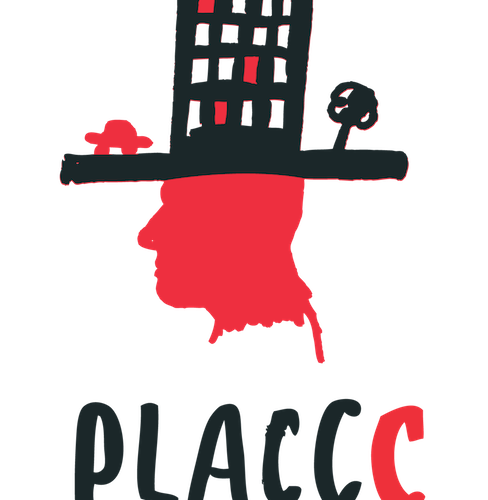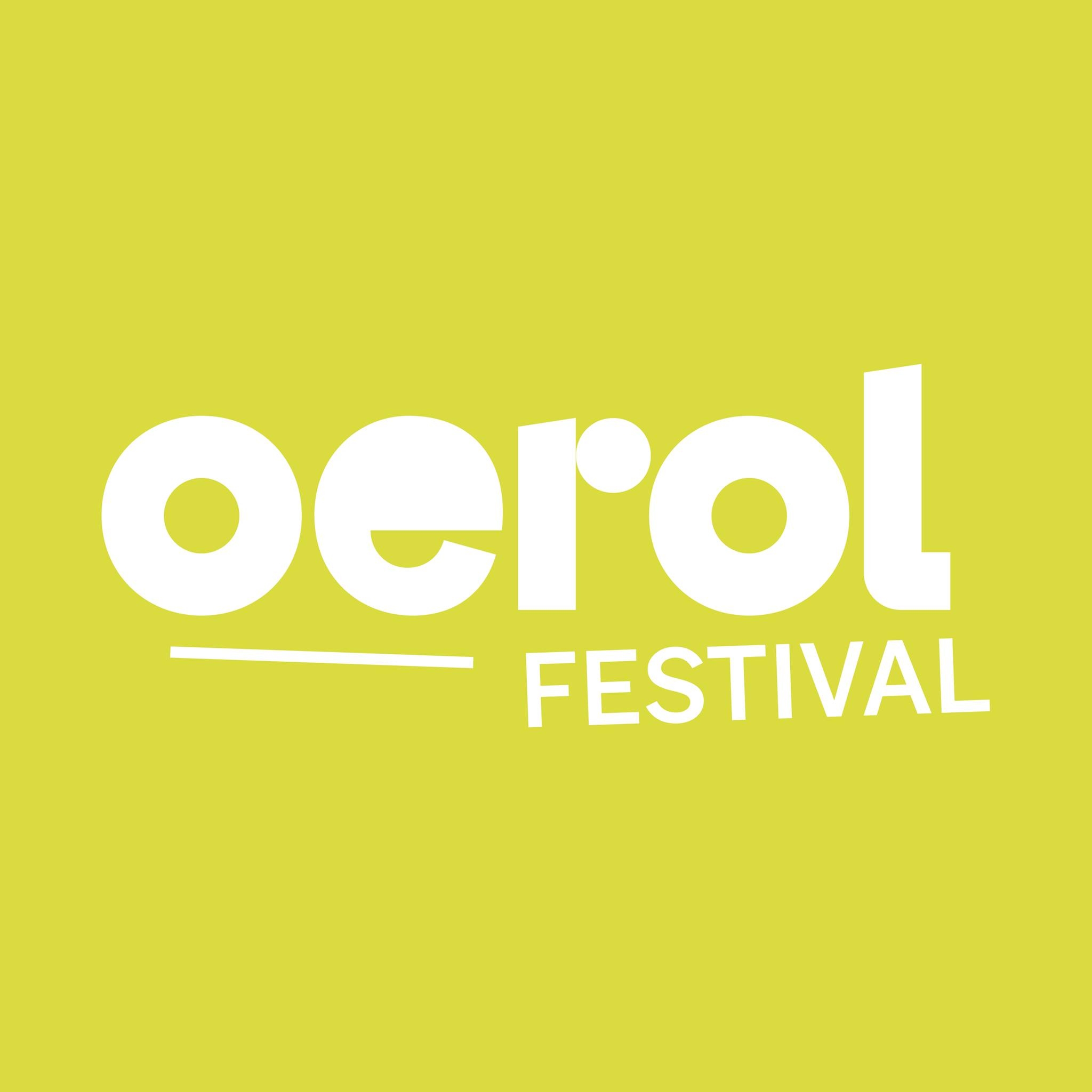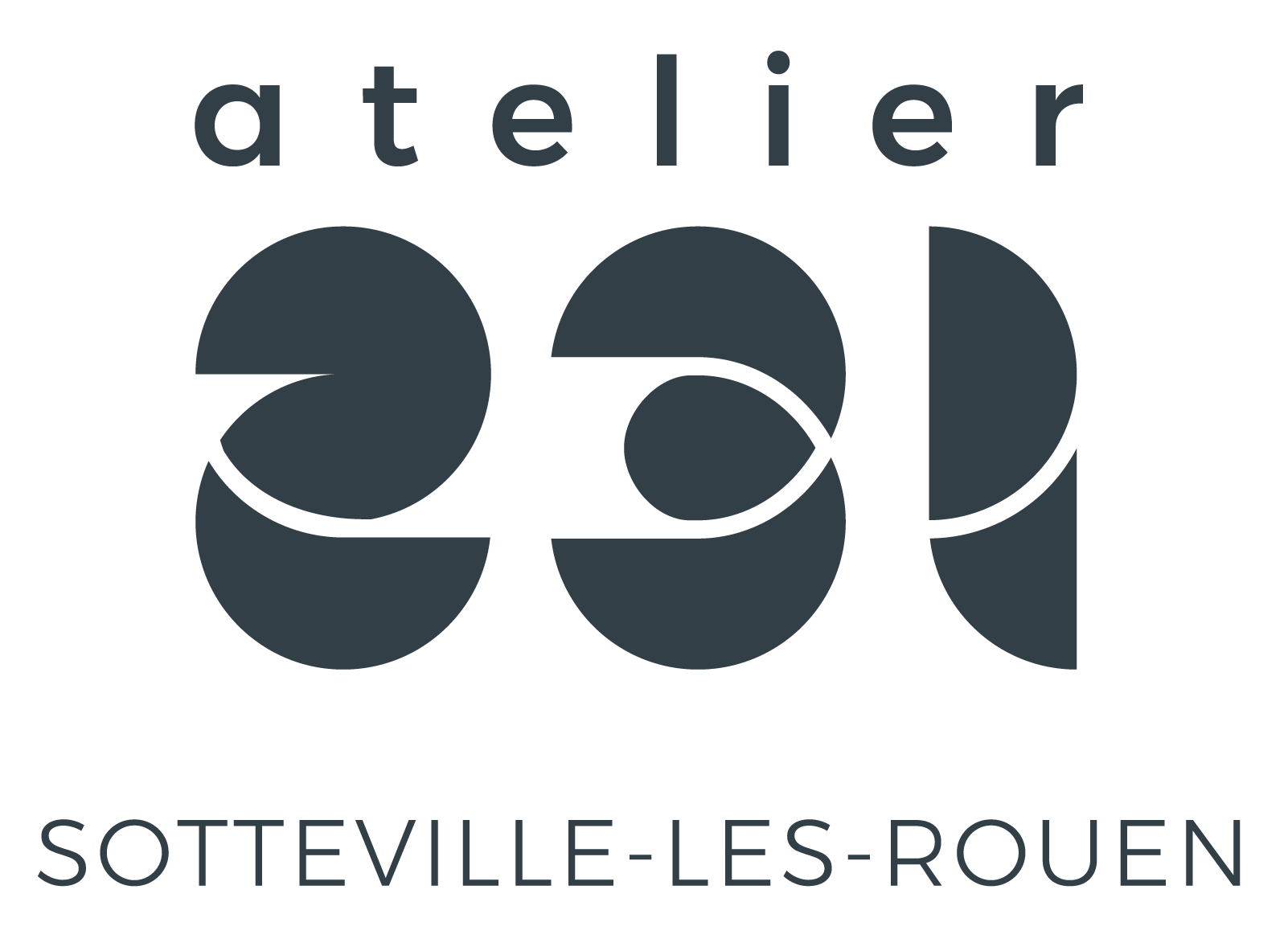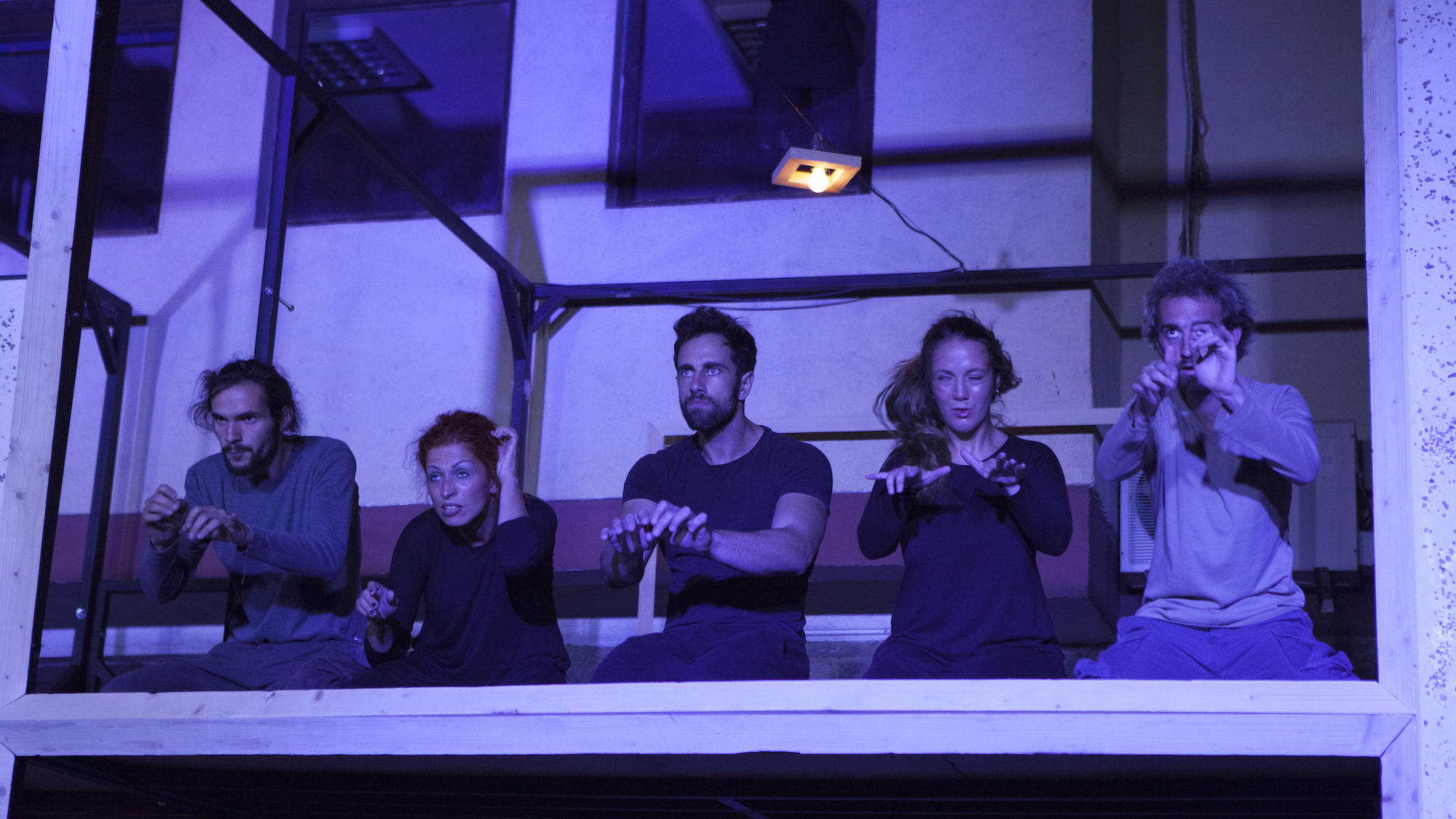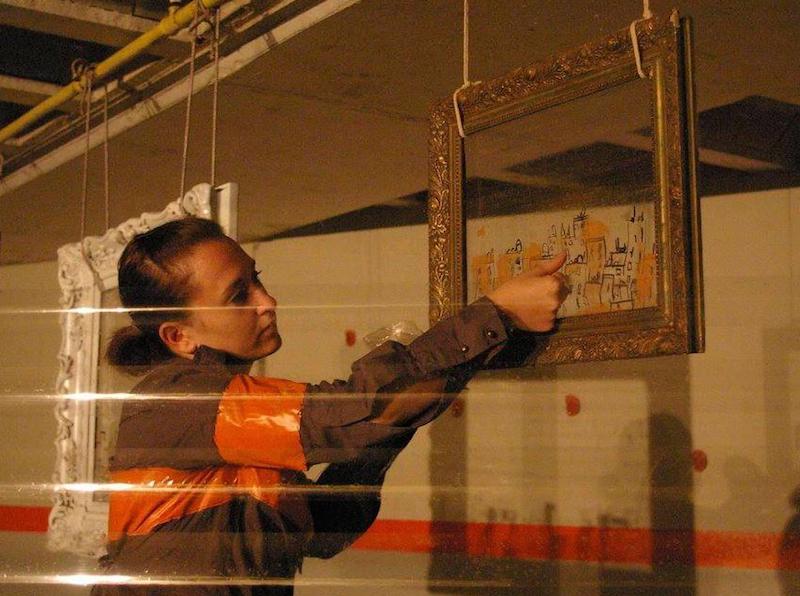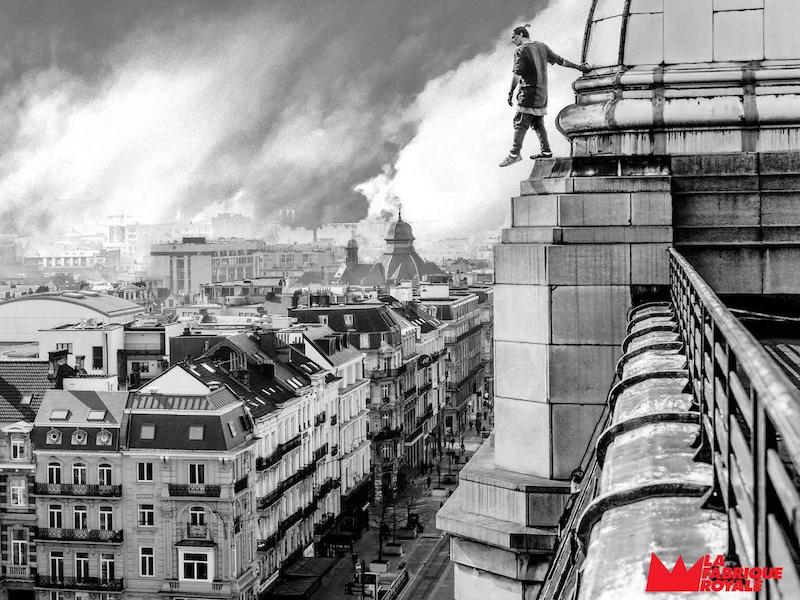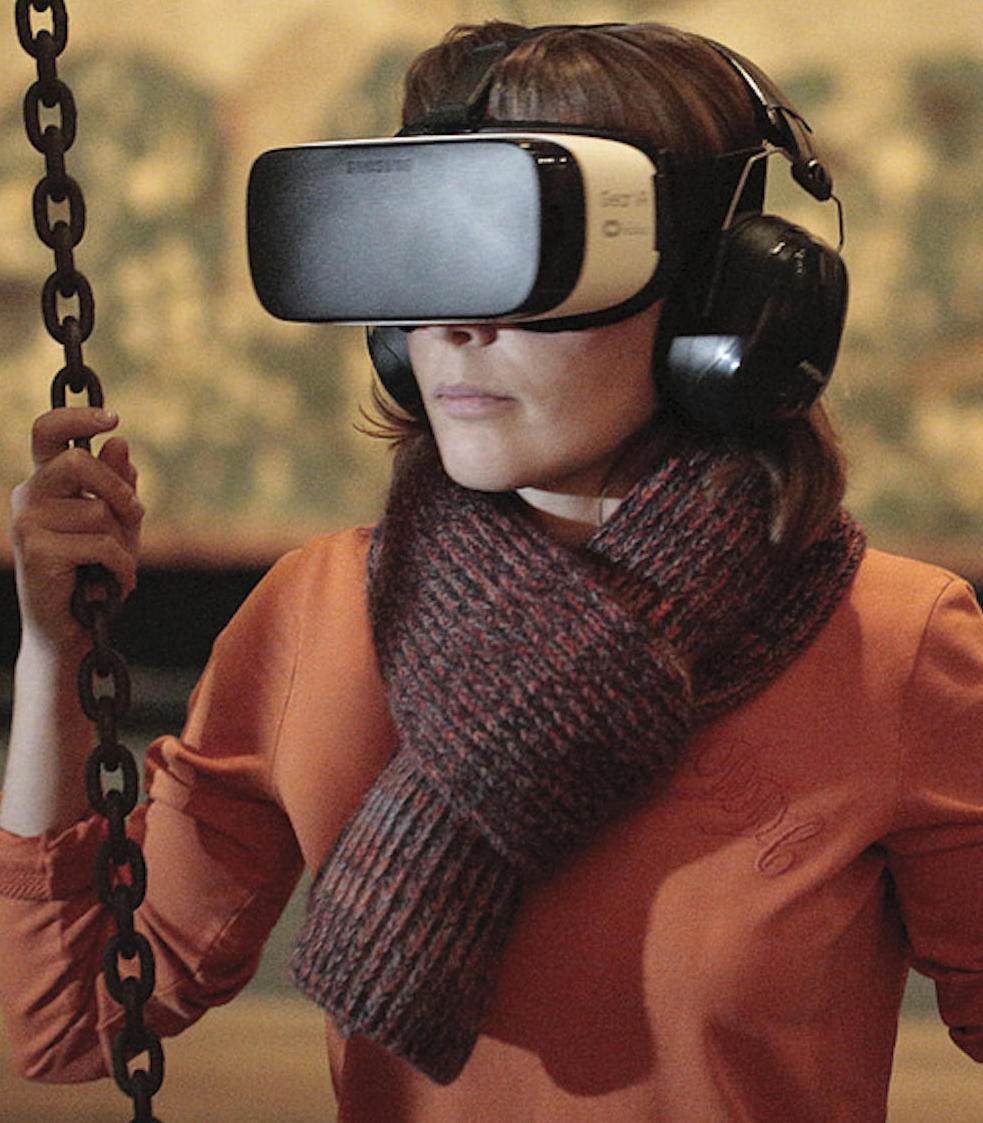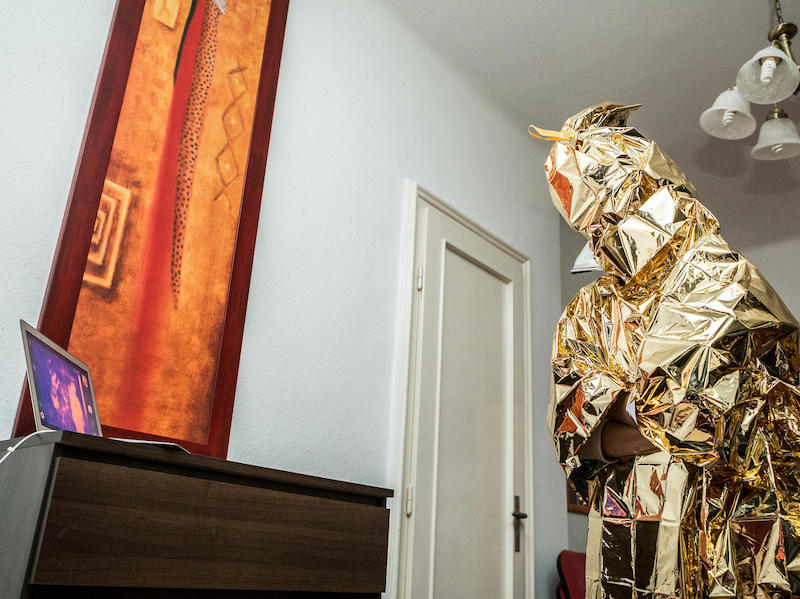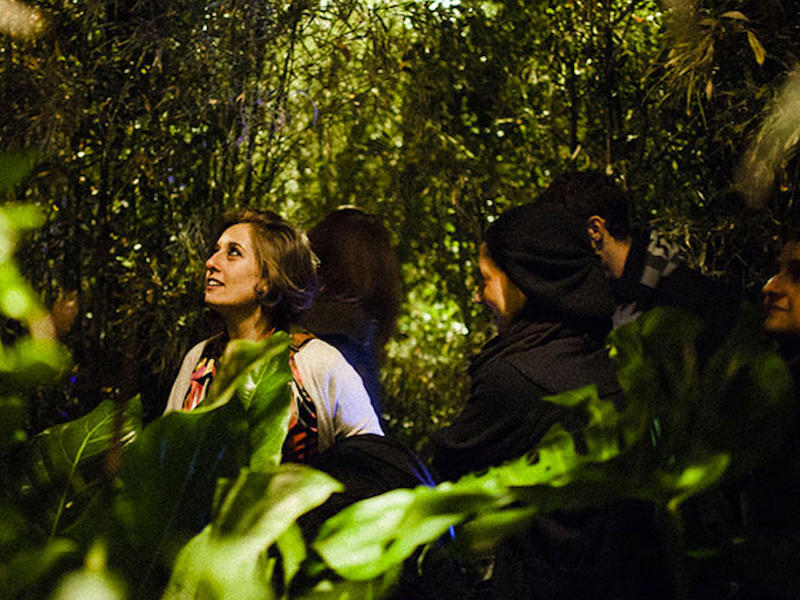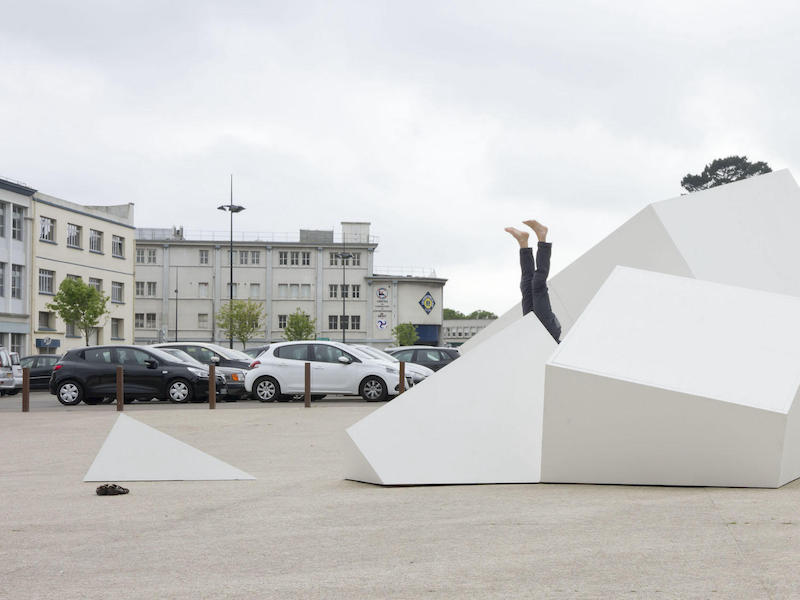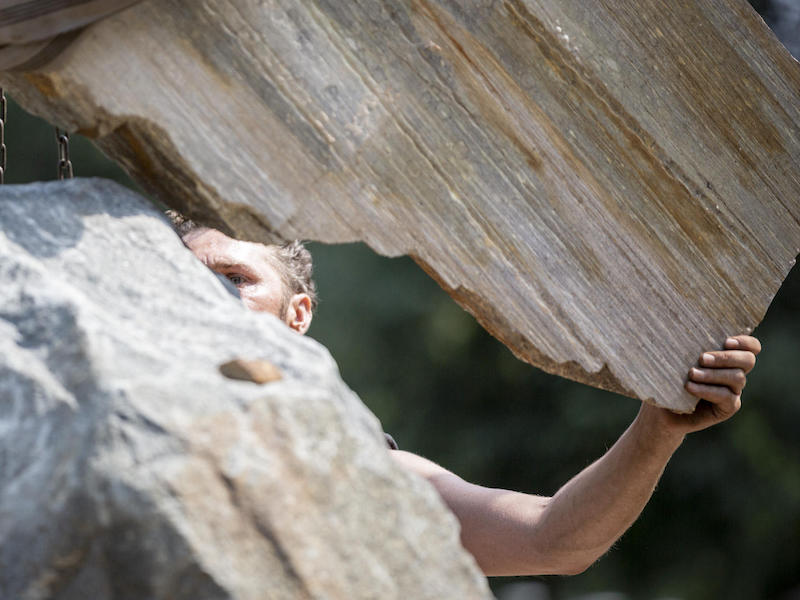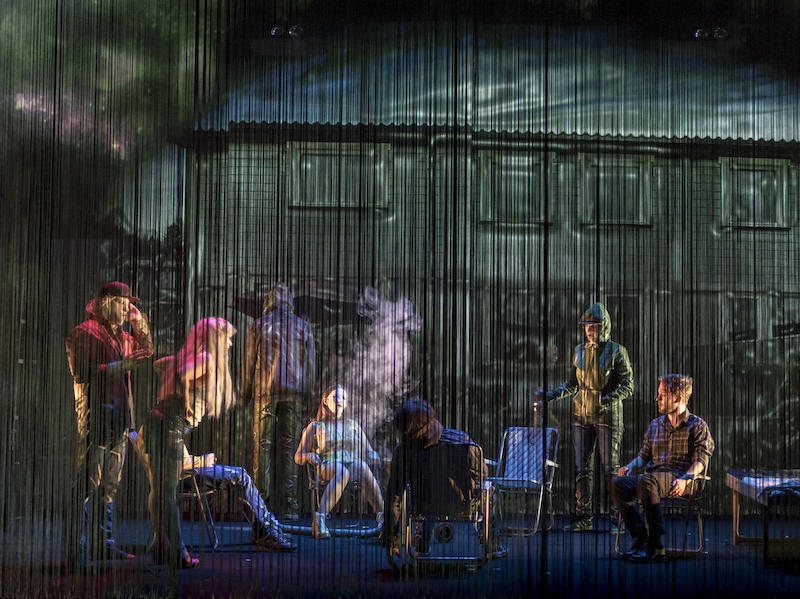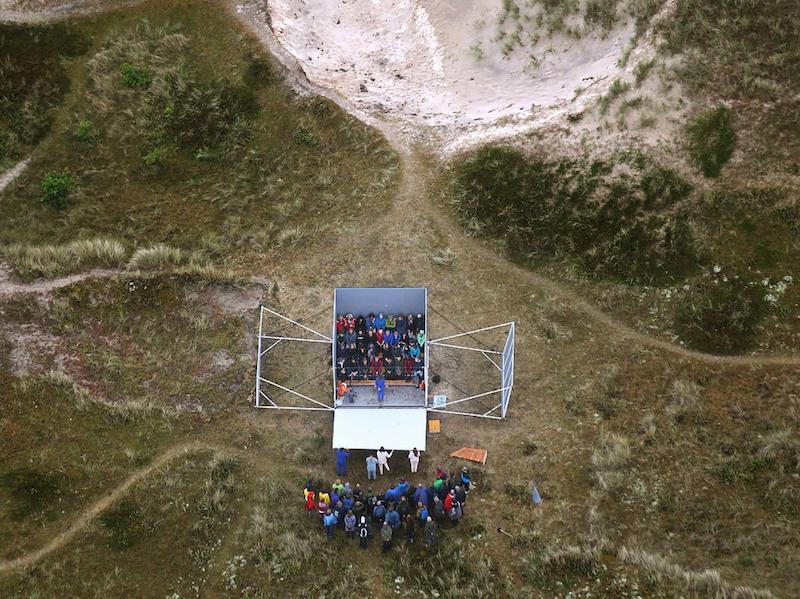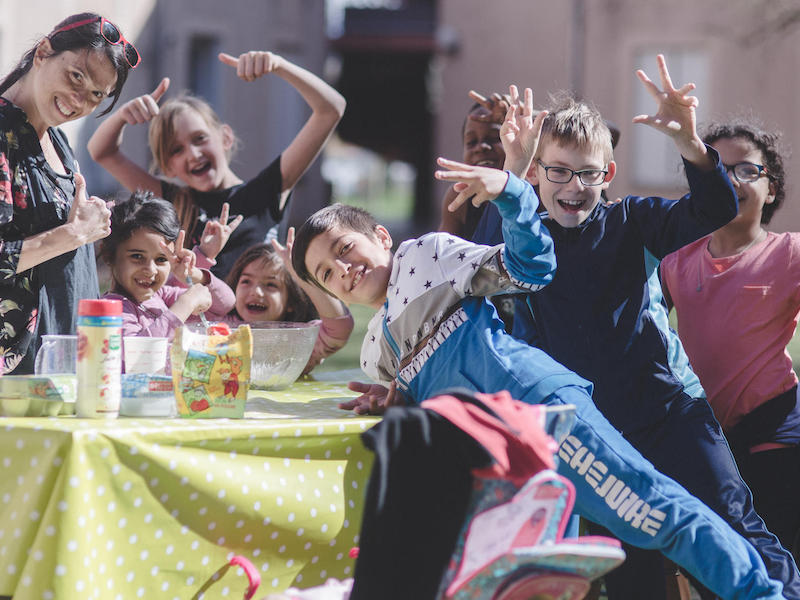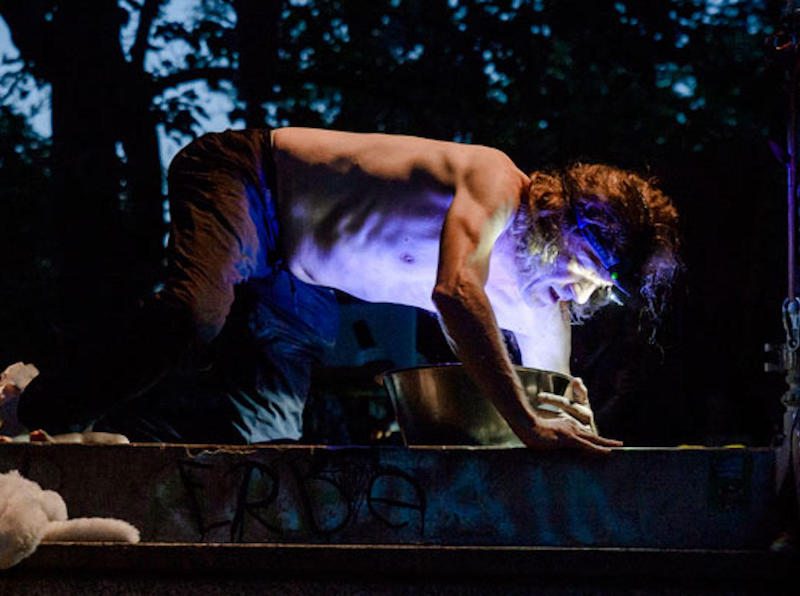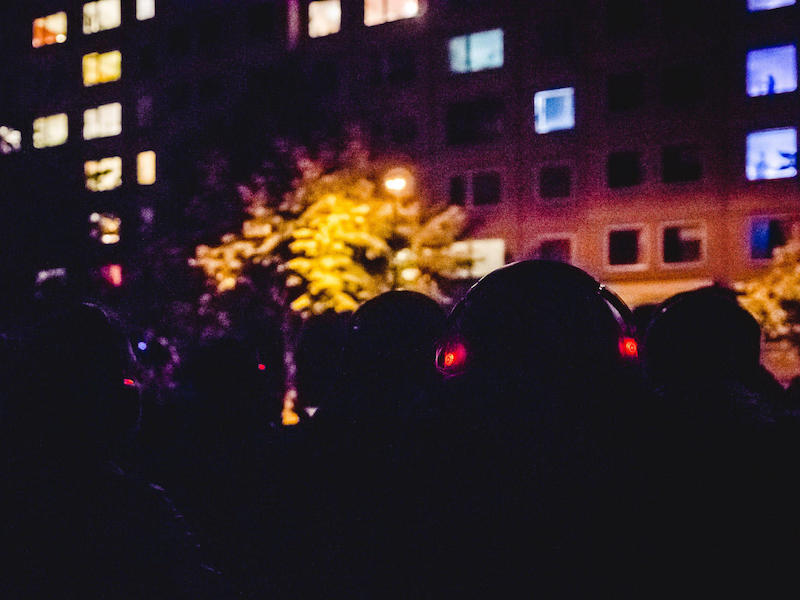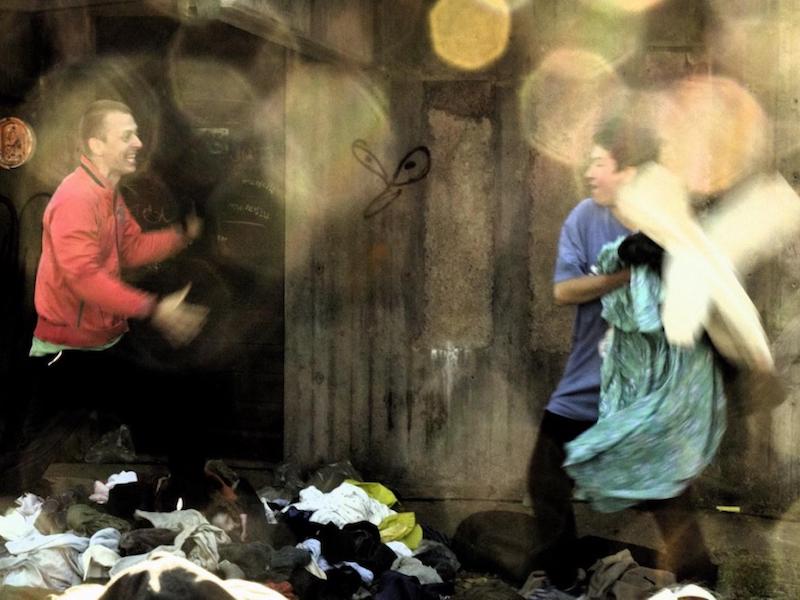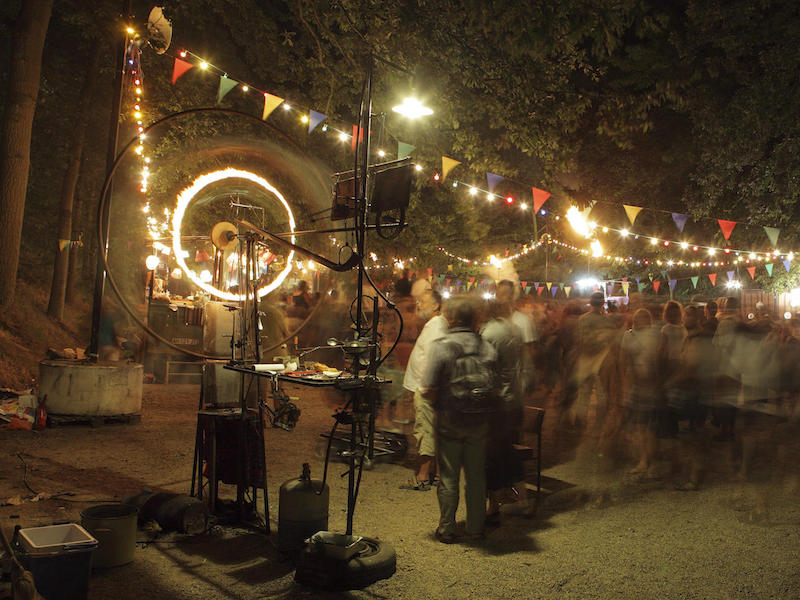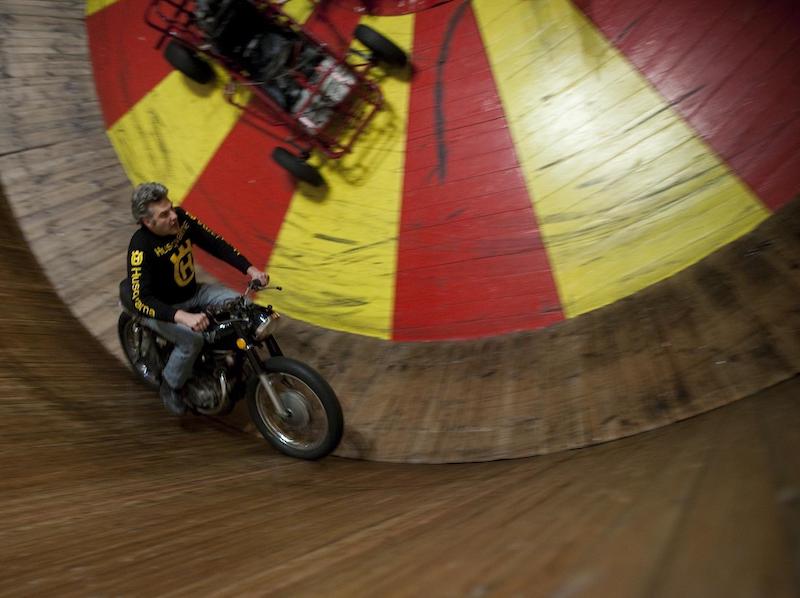Ateliers 2017
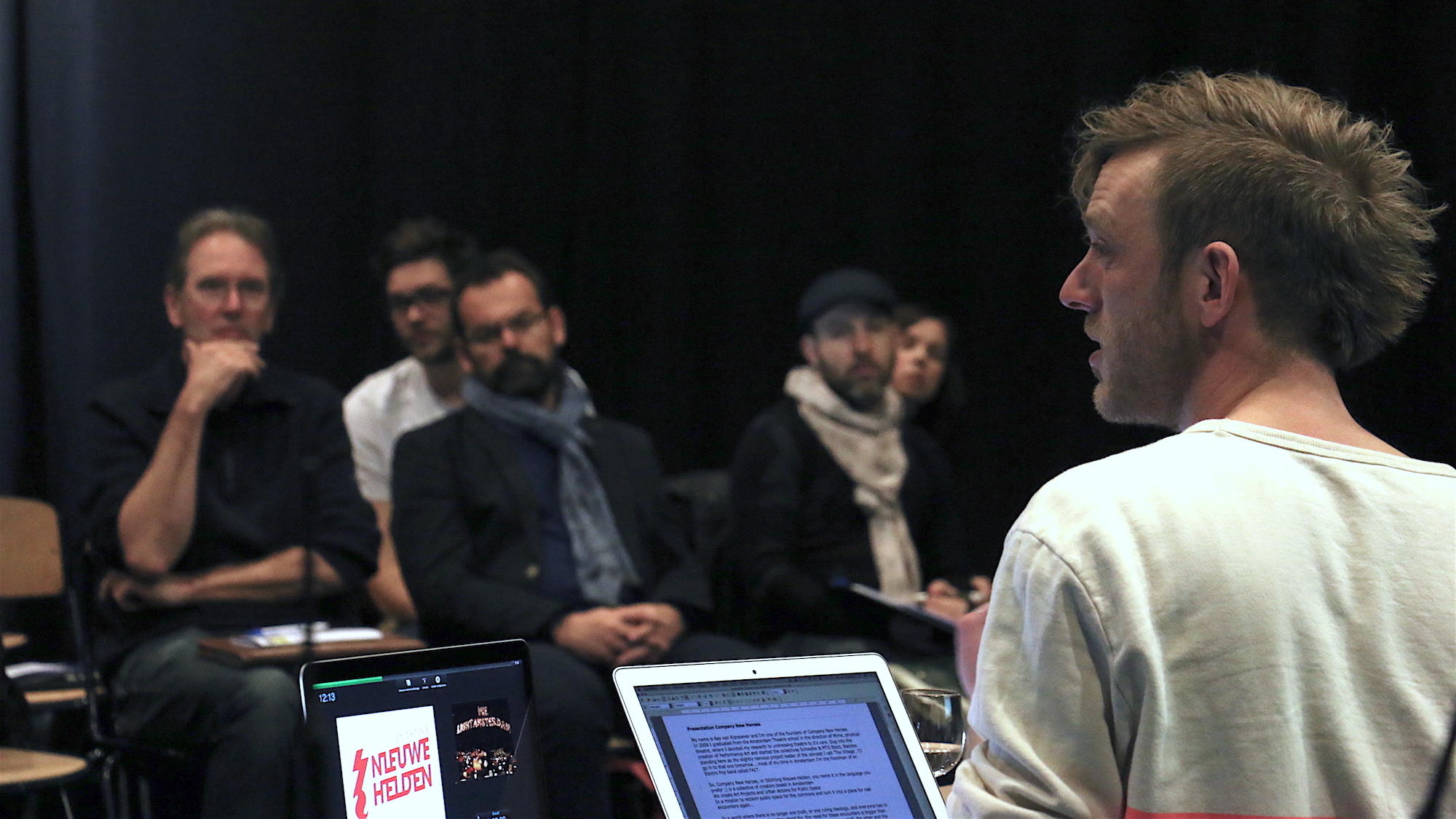
There are few spaces for artists to work together in the cultural world. Spaces need to be created where artists can dialogue with other artists, meet organisers, and discuss fundamental issues affecting artistic creation by taking into account the social and economic contexts surrounding artistic works.
The Ateliers are key to developing a new artist-producer relationship model in Europe that includes pooled expertise, equality and the integration of the realities and backgrounds of all parties. They use a cross-cutting approach to foster artist-producer relationships, collective mentoring and openness to the urban transformation sector.
Four Ateliers will be hosted by four IN SITU members in November 2017.
PRISTINA: 7 - 9 November, hosted by Teatri ODA |
| Dukagjin Podrimaj (Kosovo) | X-TERR | R.M. Sánchez-Camus (United Kingdom) | T-shirt Intervention |
| X-TERR explores the artistic ability to transform specific parts of a territory within a “normal” territory by creating a parallel artistic universe to be experienced through a drive. Audience is invited to experience a drive through an audio-visual installation outside as well as inside their own car. X-TERR questions the borders of our own individual 'safe' environments. What happens when our individual spaces open up and merge into a collective societal realm? How this realm is changed and transformed by political forces, global trends, refugee crisis, and economical challenges? | The T-Shirt Intervention is a public engagement project that looks at clothing as a medium for personal and political expression: the medium is the message. The project seeks to invite members of the public to participate both in the wearing of t-shirts and in creating new designs that speak for them and the city they are living in. Several levels of engagement in the t-shirt as an expressive object will be proposed, depending on the type of intervention chosen for public space: unannounced groups, big flashmobs… |
| Franklin Roulot - Fabrique Royale (France) | Zéro degré | Brendan Walker - Thrill Laboratory (United -Kingdom) | VR Playground |
| The Zéro Degré project is multifaceted. It is a quest, a social action, an artistic presentation, a medium that seeks to raise questions and address social, cultural and technical barriers. It is an in situ art form that ambulates, infiltrates and interacts with locals and their environments All the project’s participants, from visual artists to freerunners, videographers and musicians, create a trace, a new form of movement in a compartmentalised space, using their media and art to help create an audible form that will lead to future dialogue. | VR Playground is a mash-up of the millennia-old playground swing with 21st century virtual reality technology. Each VR Playground installation is constructed from up to 8 sculptural 2.8m orange cube structures, which can be configured in different geometric formations. Blue A-frame swing structures are suspended inside each cube, with chain sets and swing seat hung from each A-frame. Sensors underneath each seat capture rider motion data, which is used by the rider's VR headset to create and control geometric audio-visual worlds. Once they've donned a virtual reality headset, and jumped on a swing, riders can choose to be transported on one of four exhilarating swing-powered adventures. A lighter version directly implemented in existing playgrounds is currently under consideration. |
BUDAPEST: 14 - 16 November | hosted by Artopolis |
| Ambrus Ivanyos & Balint Tóth - Meet Lab (Hungary) | How to disappear completely? | Claudia Sorace - Muta Imago (Italy) | The Fearless Institute on Spacetime studies |
| How to disappear completely? is an alternate-reality game. The game tool is a book with a fictional story of a young man, Andrei, who arrives to a city, where people keep disappearing without a trace for hundreds of years. Andrei, obsessed with the idea of disappearance tries to solve this mystery and in the process also disappears. The book is linked to installations placed in the city that make it possible to experience the fiction in a real life setting, by hacking into CCTV feeds, radios, city lights, activating different light and sound installations. | The Fearless Society on Spacetime Studies is a nomadic pavilion devoted to the creation and sharing of experiences connected to the concept of spacetime, as it has been developing since the discoveries of Albert Einstein. A place specifically built in order to try to get out of the everyday experience of spacetime and to relocate ourselves in relation to the infinite greatness and smallness of the universe. It's a scary and frightening gesture: for this reason, the Society is primarily a place of care, where to gently deal with each other, while discovering together how everything is endless and connected.Time and Space work differently from how they look like. "The Society" organises a series of experiences that connect the visitors with the perception of the timespace as it really is. A movement that starts with the offering of a different vision of reality towards the activation of new and unexpected ways of consciousness. |
| Jean-Baptiste André - Association W (France) | Deal | Nick Steur (The Netherlands) | Outdoor Input #1 (working title) |
| Deal is grounded on the encounter of Jean-Baptiste André & Dimitri Jourde and draws on their experience as acrobat-dancers. It can be considered as a challenge, as a contract, as an agreement, as a goal, as an exchange, as a traffic, as a confrontation, as a secret. There is both confidence and tricky statement in it. The scenography consists in a squared space, surrounded by four blocks of seats, so as the audience is settled in four directions and can see the performance from those different angles. It is A visual work in movement, reactivating the landscape and making each place a would-be space of deal. | The concept of Outdoor Input #1 is derived from Borderline, an earlier project that Nick Steur developed in 2014. He invited Dutch and Belgian artists from various disciplines to work on autonomous projects, and submerge themselves in an abandoned brick factory for four weeks. The ruins were the inspiration source to develop new work: art inspired by, created with and presented on location. The new project will follow the same path: the work will be created on location, in situ. The artists will come without any premeditated ideas, so the inspiration comes unexpected, from meeting the selected location 'blanc'. And no electronic technology or equipment will be used during the creation, nor in the presentation. No drills, no beamers, no phones. Outdoor Input is, because of its radical framework, also a concept that is an open invitation to artists to rethink the methodology that lies at the core of their artistic practice. |
TERSCHELLING: 21 - 23 November | hosted by Oerol Festival |
| Boya Beckman - De Utvalgte (Norway) | The Ship | Thomas Lamers - The Walden Collective (The Netherlands) | The Connection of Everything with Everything |
| The Ship takes the form of a series of productions with an inner context, created in a continuum over four years. With the ship as a base metaphor, De Utvalgte will create a journey in a concrete and transposed sense, where they make landfall in places that inspire them to explore the landscape, its cultural impression and atmosphere, faced with their own artistic impulses. One of the approaches into this project has been a desire to use myths as a working tool to illuminate contemporary phenomena. They are exploring a mythic-scenic language that is open for associative perceptions, and allow narratives to emerge in dialogue with the site. | THE CONNECTION OF EVERYTHING WITH EVERYTHING is a philosophical, scientific and personal inquiry into causality in all its forms. It takes place in landscapes defined by extraction, generation or extensive use of energy, because energy by definition creates a nexus between a cause and an effect - a goal and an instrument - and always implies a landscape impact. Like in earlier works of the Walden Collective, the emphasis on the 'materiality' of the work, combined with the abstraction of the topics but at the same time the personal closeness of the performers, catches the audience off guard and gently but powerfully, though not without humor, invites them to critically reassess what they took for granted about their position in the world. |
| Floriane Facchini (Italy / France) | Cucine(s) and Cucine(s) Lab | Patrick Dunst - aXe Körpertheater (Austria) | Opera de la Rue (Working Title) |
| Cucine(s) is a documentary and plastic arrangement that puts into scene number of tales around cooking rituals that repeated daily in kitchens. Each tale explores a life story, a culinary practice, a part of life. Cuisine(s)… recipes, traditions, cultures… Cuisine(s)… life stories, chosen or sometimes imposed journeys, journey between generations… Cuisine(s)… perfumes, scents, spices… To bring into play these kitchen tales, Floriane Facchini has gathered photographs, audio pieces, videos, but also notebooks of the creation produced through the laboratories and immersions on the Cucine(s) lab territories. It will not only be the starting point, but also the essence of this device/performance. | The western understanding of an opera has become closely associated to an upper class elite. This street opera project, Opera de la Rue - L´enfant qui grandissait démesurément (working title) puts the performance outside, into the middle of the audience and in addition into the courtyard of a social housing project. The story develops through physical audience participation and even producing ambiences with percussion instruments that are part of the scenery. |
SOTTEVILLE-LES-ROUEN: 28 - 30 November | hosted by Atelier 231 |
| Lars Lindegaard Gregersen - GLiMT (Denmark) | opHAV | Christophe Prenveille - Cie Carabosse (France) | Par les temps qui courent…– Carnet de Voyages |
| opHAV is a site specific performance with acrobatics, physical theatre and live music, created specifically for harbor fronts. The place where human civilisation and the sea meet. The performance navigates around a local crane in the harbor. This construction meant to connect land and sea. It becomes the anchor for the performers, a co-player which opens their hopes, aspirations and dreams. The harborfront has always been the place where journeys have started and ended. The place where new people, food and goods have arrived to the existing society. And with everything that follows of hope and joy, but also fear and suspicion. opHAV (Danish for ancestry and literally up-sea) explores how humans and society as a whole welcomes new experiences, new possibilities and new people. | Par les Temps qui courent… [As time goes by…] is a performance in the form of a travel journal. This living, shared and multicultural travel journal is the result of different perspectives and multiple modes of expression. It can be given to any and all – on the streets here and elsewhere. Travelling artists and artistic travellers, drawn to new shores, curious to meet others, are navigating both the tarmac and the paths less trodden. On their latest trip, they will be taking a world painter, a picture-tamer, a poet who strokes the black and white keys, a tall double-bass player, fire sculptors, goldsmiths of sounds, acrobats of precious scrap metal and… This small flickering and fragile flame whose light casts the shadows of the world. Like a travel journal, the performance is broken down into different “pages”. These are living installations, connected to one another across public space. |
| Stephen Skrynka (United-Kingdom) | Wall of Death | Jan Moček (Czech Republic) | The Radiant City II |
| The intention is to exploit an extraordinary circular space: a wooden cylinder 8 metres in diameter and 6 metres high. With the audience perched at the top looking down into the pit, The Wall of Death is a unique performance space. Stephen Skrynka is teaming up with other artists, performers, writers and composers to produce an extraordinary piece of theatre, physical, vigorous and thought-provoking. The collaborative event will include a performance by the death riders but only after a trip down into the bowels and back up through the wings of life. | The Radiant Cities is an long term artistic project, that explores the phenomena of collective housing, (post)socialistic housing estates and utopian realities of past and today. The project consists of two performances tracing different developments of once utopian urbanistic ideas proposed in 1920´s by the architects around the Athen Chart. The concepts of the best known member of the group - architect Le Corbusier, namely his “ideal city for three million people” known as The Radiant City gave rise to modern urban planning and was in a distorted way materialized during the post-war era with the massive construction of a prefab housing estates in both West and East Bloc countries. Whereas the first part of the project (entitled The Radiant City: The Future Is Not What It Used To Be) explored the former East Bloc housing estates in former Czechoslovakia, the second part is focused on the development in Western countries, namely in Germany and France. Both capitalist invention and a Soviet symbol, prefabricated panel house is thereby understood as a collision space of East and West ideologies or more appropriately, its remains to present - day situation. |
